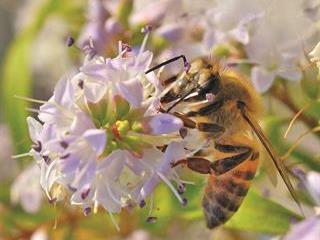
Bees are of course renowned for their services as pollinators and honey producers. Not everyone knows, however, that the little insects also produce a sticky, greenish-brown substance called propolis. They do this by combining the sap of needle-leaved trees or evergreens with a discharge from worker bee glands and beeswax, and use it to coat their hives.
They also use it to cover the carcass of a bee that dies inside the hive to prevent the spread of harmful bacteria. Because it is made from different sources, each batch of propolis will be slightly different.
In general, it comprises 55% balsams, 30% wax, about 10% pollen and various other components, such as flavonoids, phenolics, aromatics and trace amounts of fatty acids, vitamins and minerals.
Natural antibiotic
Balsams, aromatic plant-based resins, have long been used for healing. During the Middle Ages, knights wounded in battle employed them as a form of treatment. More than a century ago, my grandfather used to make an ointment of goose grease and propolis, which he used on horses and cattle to treat sores and hoof fissures.
Propolis acts as a natural antibiotic, raising the body’s resistance to disease, whether caused by bacteria, viruses or fungi. Because of its antibacterial properties, it can be used to treat skin conditions such as abrasions, cuts, scrapes and bruises. Applying a thin layer of propolis gel will help the girth and saddle areas that have to endure saddle and cinch pressure; it can also be used on the chest and legs.
Propolis is used to treat gastrointestinal problems and is said to lower blood lipid and cholesterol levels and provide energy. I feed my endurance horses propolis during hard exercise.
I have found that using propolis to plug an abscess helps speed up healing. I also feed it to horses prone to seasonal allergies. Bear in mind here, though, that this usually leads to a ‘healing crisis’, where the symptoms worsen. This is temporary, but it does frighten many owners.
How to obtain propolis
To harvest propolis, make a small hole in the hive; the bees will try to repair it with propolis. Alternatively, scrape it out of the hive. It is also available in tablet form. If in doubt, consult your vet first.













